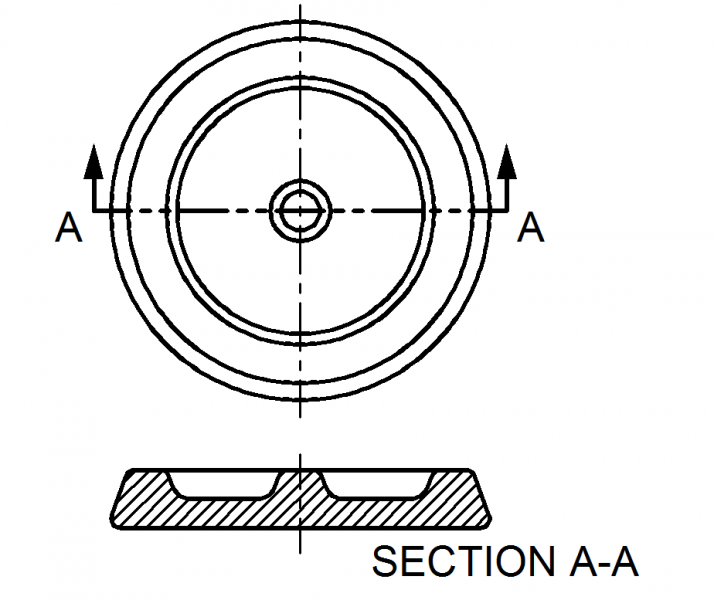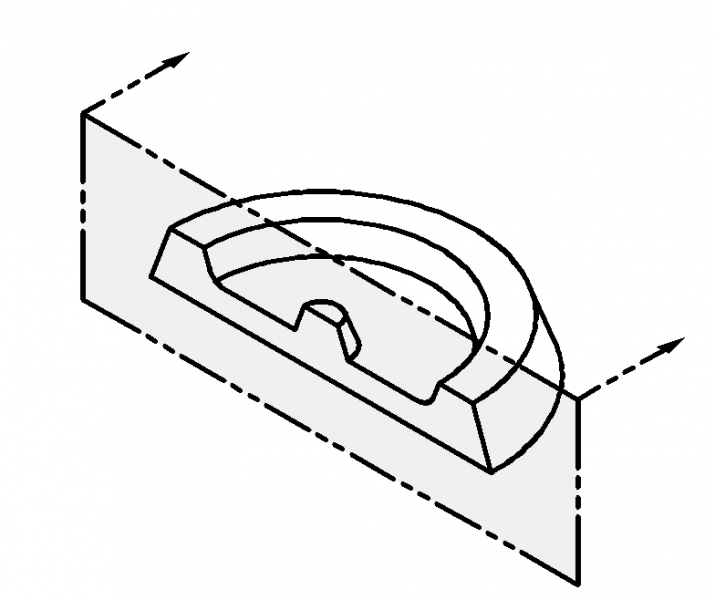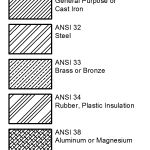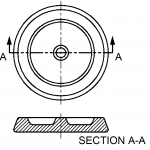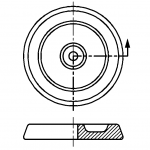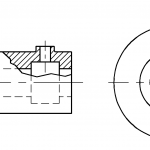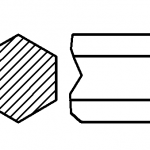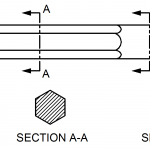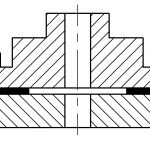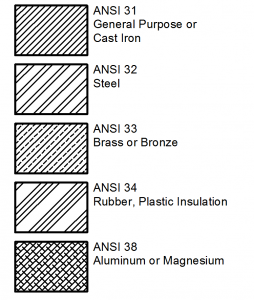
ANSI/ASME hatch patterns are standardized line patterns used in technical drawings to indicate different materials in section views. When a part is "cut" in a section view, hatching is applied to the exposed surface to show that solid material is present—and the type of pattern used can convey what that material is. The most common...
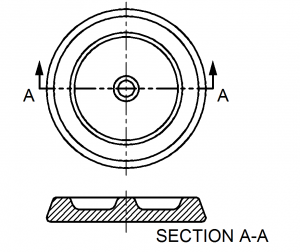
A full section is a type of section view in which an object is imagined to be cut entirely in half by a straight cutting plane, typically along its centerline. Everything in front of the cutting plane is removed, and the view shows the remaining portion as if you are looking directly at the cut...
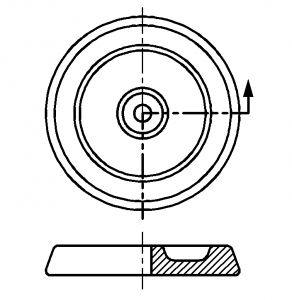
A half section is a type of section view used to show both the interior and exterior of a symmetrical object in a single drawing. To create a half section, only one quarter of the object is imagined to be removed—this is done by passing a cutting plane halfway through the object, both vertically and...
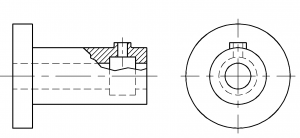
A broken-out section is a type of sectional view where only a small, localized portion of an object is cut away to expose internal features, while the rest of the view remains untouched. Unlike full or half sections that use cutting planes across the entire part, a broken-out section reveals just enough of the interior...

A revolved section is a way to show the cross-sectional shape of a feature—such as a spoke, handle, or rib—by sketching its profile directly onto the object's regular view. Instead of creating a separate section view, an imaginary cutting plane is passed perpendicular to the long axis of the feature, and the shape that would...
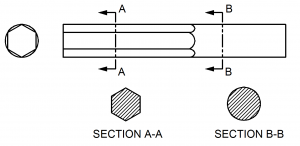
A removed section is a type of sectional view used to show the cross-sectional shape of a part, but unlike a revolved section, the cross section is drawn away from the main view, in a separate location on the drawing. This is done when the cross-sectional shape is important enough to warrant extra space for...
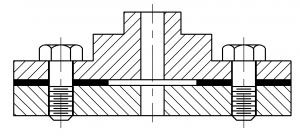
When sectioning multiple components in an assembly drawing, the goal is to reveal the internal structure of each part while making it clear how the components fit together. To achieve this, the cutting plane passes through the entire assembly, and each part that is intersected by the plane is shown with section lining. However, to...
Worksheet - Section Views - Sheet 1Download
ANSI/ASME hatch patterns are standardized line patterns used in technical drawings to indicate different...
A full section is a type of section view in which an object is imagined to be cut entirely in half...
A half section is a type of section view used to show both the interior and exterior of a symmetrical...
A broken-out section is a type of sectional view where only a small, localized portion of an object...
A revolved section is a way to show the cross-sectional shape of a feature—such as a spoke, handle, o...
A removed section is a type of sectional view used to show the cross-sectional shape of a part, but...
When sectioning multiple components in an assembly drawing, the goal is to reveal the internal structure...
Worksheet - Section Views - Sheet 1 Download
